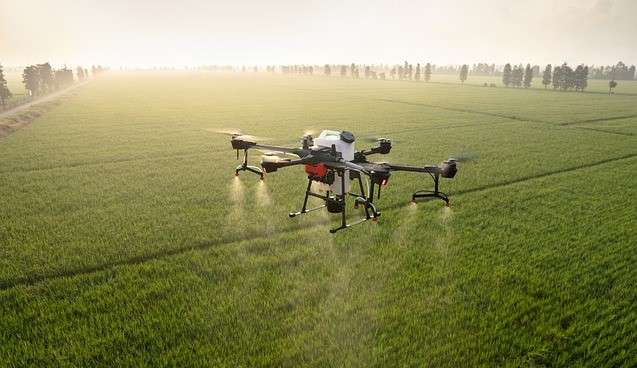Introduction
Agriculture has come a long way from traditional farming methods that relied heavily on manual labor and guesswork. Today, technological advancements are reshaping the industry, and one of the most notable innovations is the use of drones. These unmanned aerial vehicles are rapidly becoming a vital tool for modern farmers, offering a range of benefits that extend from crop monitoring to pest control. In this blog post, we will delve into the profound impact of drones in agricultural automation, touching on their applications, advantages, and the future of farming.
Agricultural Automation: A Necessity
Before we delve into the role of drones in agricultural automation, it’s crucial to understand why automation is necessary in modern farming. Agriculture faces several challenges, including a growing global population, limited arable land, and the need to produce more food sustainably. These challenges require innovative solutions to increase productivity and efficiency while minimizing resource consumption.
Automation in agriculture addresses these challenges by leveraging technology to optimize farming operations. This includes the use of drones, which have emerged as a game-changing tool in precision farming.
The Applications of Drones in Agriculture
Drones, also known as Unmanned Aerial Vehicles (UAVs), have found a wide range of applications in agriculture, making them an indispensable asset for farmers. Here are some of the key roles that drones play in modern farming:
- Crop Monitoring and Management
One of the primary uses of drones in agriculture is crop monitoring. Drones equipped with high-resolution cameras and multispectral sensors can capture detailed images of crops from the air. These images provide valuable insights into the health and growth of the plants, allowing farmers to identify issues such as nutrient deficiencies, diseases, and pests early on. - Precision Agriculture
Precision agriculture is all about optimizing the use of resources such as water, fertilizers, and pesticides. Drones play a pivotal role in this regard by providing real-time data on crop conditions. Farmers can use this data to make informed decisions, applying resources only where and when they are needed. This not only reduces waste but also increases crop yields. - Irrigation Management
Efficient irrigation is crucial for crop health and yield. Drones equipped with thermal imaging cameras can detect variations in soil moisture levels. By identifying areas that require more or less irrigation, farmers can save water and improve overall irrigation efficiency. - Pest Control
Controlling pests is a constant battle in agriculture. Drones equipped with spraying systems can precisely target affected areas, delivering pesticides or beneficial insects with greater accuracy than traditional methods. This reduces the environmental impact of chemical use while effectively protecting crops. - Crop Mapping and Analysis
Drones can create detailed 3D maps of fields, providing valuable information on soil quality and topography. This data can help farmers plan field layouts and optimize planting patterns for maximum productivity.
Advantages of Using Drones in Agriculture
The adoption of drones in agriculture offers several significant advantages for farmers:
- Increased Efficiency
Drones can cover large areas in a fraction of the time it would take a person on foot or a tractor. This increased efficiency allows farmers to monitor and manage their crops more effectively. - Cost Savings
By optimizing resource use and reducing the need for manual labor, drones can lead to substantial cost savings for farmers. This is especially important in an industry where profit margins can be tight. - Improved Crop Yields
With the ability to detect and address issues early, such as pests or nutrient deficiencies, drones help farmers prevent crop loss and ultimately increase yields. - Environmental Benefits
Precision agriculture enabled by drones leads to more sustainable farming practices. Reduced pesticide use, better irrigation management, and optimized resource allocation contribute to a smaller environmental footprint.
Challenges and Future Prospects
While the benefits of using drones in agriculture are undeniable, there are still challenges to overcome. These challenges include regulatory issues, the cost of acquiring and maintaining drone technology, and the need for training and expertise. Additionally, concerns about data privacy and security must be addressed.
Despite these challenges, the future of drones in agriculture looks promising. As technology continues to advance, drones will become more affordable and user-friendly. Regulatory frameworks will likely adapt to accommodate their widespread use, and more farmers will acquire the necessary skills to operate them effectively.
Conclusion
Drones have emerged as a powerful tool in agricultural automation, offering a wide range of applications and numerous advantages for farmers. As the agriculture industry continues to evolve, drones will play a pivotal role in increasing efficiency, reducing costs, and promoting sustainable farming practices. With ongoing advancements in technology and a growing acceptance of drones in agriculture, we can expect to see even greater integration of these aerial wonders into the future of farming. As we embrace the era of agricultural automation, drones will undoubtedly remain at the forefront of this transformative journey.





